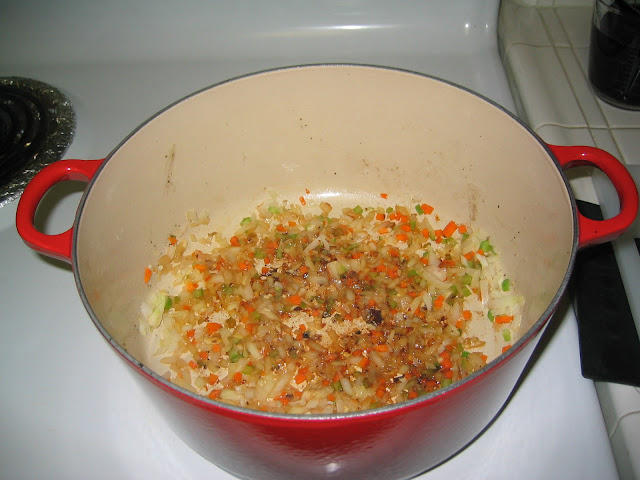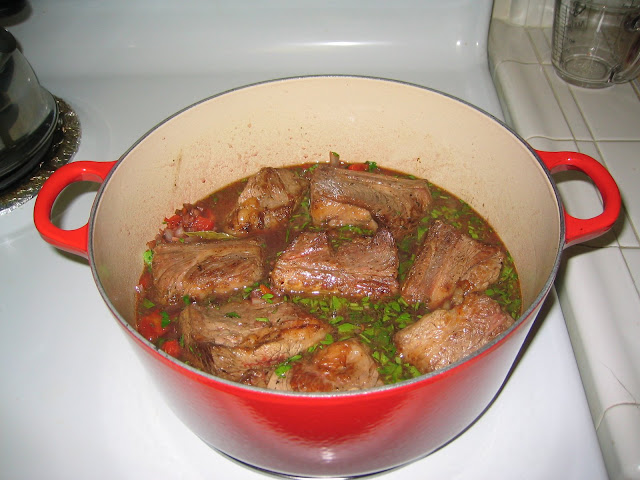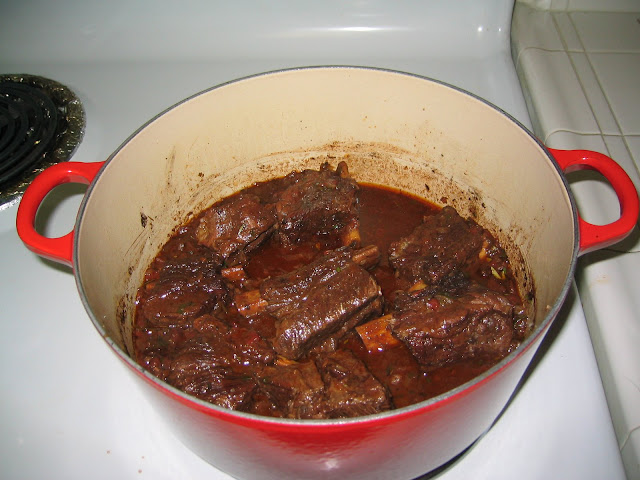For many people, Memorial Day weekend marks the beginning of summer. Of course, the start of summer also means the start of grilling season (not that
I waited until this past weekend though). Yesterday, I decided to kick off the summer grilling season with one of my all-time favorites: beer can chicken. Popularized by
Steven Raichlen (who even wrote an
entire book on this dish), beer can chicken comes in many forms, but the basic idea is the same across all recipes: take a whole chicken, season it with some rub, put an open, half-filled can of beer in the cavity (i.e. shove it up the chicken's butt), and hot-smoke it over indirect heat until it's done.
On the way home from work, I stopped by
BevMo to pick up the key ingredient: a 12-pack of
Pabst Blue Ribbon, my official beer of choice for beer can chicken. I have bottled beer at my place, but you can't substitute bottles for cans in this instance. (Alright, I like to use PBR because it's cheap, okay?)
As usual, I decided to make two chickens, as it doesn't take any more fuel to make two chickens than it does to cook one. (In this day and age, it's best not to waste energy.) First, I took two whole chickens that I picked up at
Costco this weekend, removed the giblets from the cavities, and washed them out very well (both inside and out). After patting the chickens dry with paper towels, I seasoned them with a dry rub. For these chickens, I used a generous amount of
McCormick's Montreal Steak Seasoning. Yes, I know that they make a
chicken seasoning, but I like the steak version; plus, that's what I had on hand. I also like to use
Penzeys Galena Street Rub, but I didn't have enough for the two chickens.

After seasoning the chicken, I opened two PBRs, drained out half of the can (I made an attempt to drink the extra beer, but it's just not that good), punched a few additional holes in the top with a church key, and poured in some of the excess rub. Then, I put a can into the cavity of each chicken and folded back the wings so that they wouldn't burn while cooking.
In order to cook a whole chicken thoroughly without charring the exterior, you need to cook the chicken over indirect heat. Therefore, I would only need to use one of the two burners on my grill. I know that a grilling purist would probably make this over a charcoal or wood fire, but I like using gas, as it is easier to regulate the heat and smoke. (Yes, I have made this recipe over charcoal on a Weber grill, but I still like using my propane rig for this better.) On the side without the flame, I placed a foil pan to catch the drippings from the chickens, which I would be placing above. On the other side of the grill, over the lit burner, I set a smoker box which I filled with hickory chips that I soaked in water for 20 minutes. The hickory would provide the smoke that I wanted to flavor and color the chicken.
Using the can and the two drumsticks, you can form a fairly stable tripod so that the chicken is cooked upright. This is the secret to beer can chicken. The beer will steam out to keep the chicken moist as well as to help cook the inside of the cavity. I placed the chickens on the grill in the upright position, taking care to leave some space between the chickens.

I started the burner on high in order to get the wood to smolder. After 5 minutes or so, I saw that there was a decent amount of smoke coming from the grill, so I dropped the temperature to low and left the chicken to smoke for the next hour and half or so, turning the chicken every 30-35 minutes to ensure even cooking.
After the 90 minutes were up, I took my instant-read probe thermometer to check on the doneness. Even though many people think that you need to cook chicken to 180 degrees F, you really only need it to get to
165 degrees F in order to kill any nasty bug. Counting on carryover heat, I pulled the chickens off the grill once they hit 160 degrees F in the thickest part of the thigh.

After a short rest to allow the juices to redistribute, I took one of the chickens, carefully removed the half-filled can of hot beer (no, the beer won't completely evaporate), and placed the cooked bird on the cutting board.

A few deft cuts later, I was ready to eat!















































